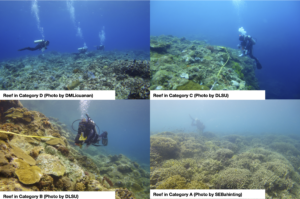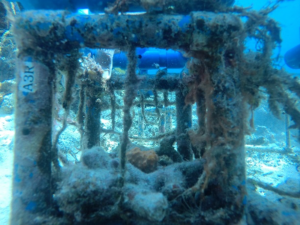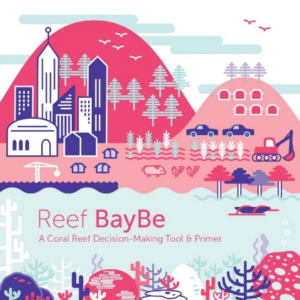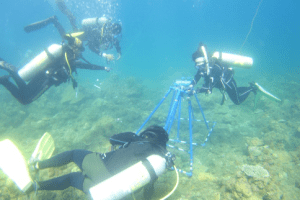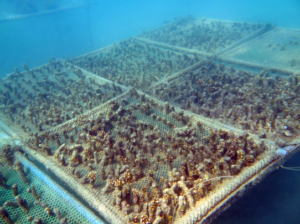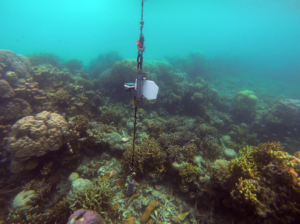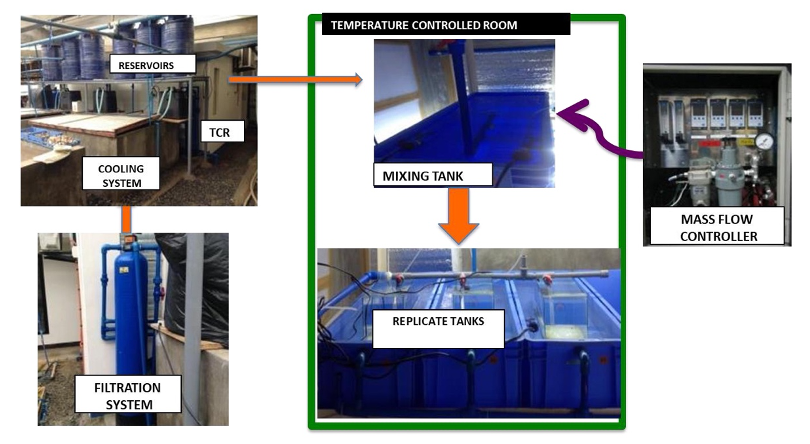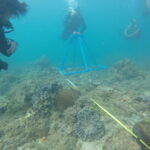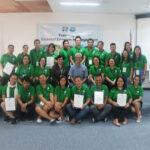
Coral Industry Profile
The Philippines’ coral reef area of 26,000 square kilometers (km2) is the 2nd largest in Southeast Asia. There are approximately 500 species of scleractinian or “hard” corals and 12 of these species are considered endemic or native to the region. Hard corals contain calcium carbonate, a hard substance that turns into rock over time. Some examples of hard corals are Acropora granulosa, Montipora digitata, and Pocillopora damicornis. On the other hand, octocorals or “soft” corals do not form stony skeletons as they remain bendable. At least 10 families of soft corals can be found in the Philippines.
According to the Department of Environment and Natural Resources (DENR), there are around 1,800 established marine protected areas (MPAs) in the Philippines. This includes Tubbataha Reefs Natural Park, Apo Reef Natural Park (ARNP) and Tañon Strait Protected Seascape. There are also 6 marine biogeographic regions, namely: Celebes Sea, Northern Philippine Sea, West Philippine Sea, Southern Philippine Sea, Sulu Sea, and Visayan Sea. The Sulu-Sulawesi Marine Ecoregion and the West Philippine Sea are considered priority seascapes.
Problems in the Industry
The challenges faced by coral industry include limited research and studies on the Philippine coral reefs and its status, gaps in current understanding of the impacts of the climate change related stressors, limited knowledge on coral reef management, overexploitation as coral reefs are often subjected to destructive fishing techniques and excessive harvesting, and limited policies to stop overexploitation and destructive fishing techniques.

ISP for Coral
A number of coral reef areas are still considered to be Category D, with 0-22% hard coral cover (HCC). There is a need to refine and validate coral reef restoration technologies, as well as develop standardized assessment tools and/or decision support systems. Currently, there are also limited studies on the assessment, mapping, and monitoring of fully formed reefs in shallow and mesophotic zones and limited knowledge on coral reef resilience to environmental stressors. The ISP for corals aims to improve coral reef management for sustainable economic, social and ecosystem services such as fisheries, tourism, and coastal protection through the enhancement of culture production, restoration technologies, methods and protocols, and increase understanding of coral responses to threats. The program also targets to capacitate scientists on the use of standardized methods, tools and technologies for reef assessment, as well as to improve the country’s reef management to keep an updated status of the Philippine coral reefs.
Strategic R&D
Strategic R&D is DOST-PCAARRD’s banner program comprising all R&D activities that are intended to
generate outputs geared towards maximum economic and social benefits
Status of corals across the Philippines including endangered coral and coral reef species listed in the International Union for Conservation of Nature (IUCN)
DOST-PCAARRD supported the nationwide coral reef assessment in 2015, which assessed a total of 206 stations using HCC and allowed...
Read MoreBiology and reproductive patterns of corals
The reproductive patterns of 18 coral species in Luzon, 13 coral species in Visayas and 11 coral species in Mindanao...
Read MoreCoral responses to environmental stress
The physiological limits of 17 selected coral species in response to ocean acidification, ocean warming, and anthropogenic nutrient-coastal acidification stress...
Read MoreCoral responses to thermal stress
Genetic mechanisms that confer stress susceptibility or resilience to corals was determined using RNA-sequencing (RNA-seq) technology. It was discovered that...
Read MoreFactors that influence coral population persistence to serve as a guide to resilience-based management and restoration practice
This project studied the genetic structure and connectivity of natural populations of representative coral species with varying dispersal potentials based...
Read MoreUnderstanding coastal acidification effects to corals and marine organisms
The Coastal Acidification Program generated information on coastal acidification as a contribution to justify the inclusion of coastal acidification to...
Read MoreImportant reef fish functional groups in hard coral recovery
Community level monitoring programs remain as an important source of primary data that help researchers elucidate important processes in complex...
Read MoreTechnologies
Products, equipment, and protocols or process innovations developed to improve productivity, efficiency,
quality, and profitability in the agriculture and aquatic industries, and to achieve sustainable
utilization and management of natural resources
Substrate Enhancement in a High Energy Environment
After a crown of thorns infestation in 2019 followed immediately by consecutive typhoon events, extensive rubble fields have developed in ARNP which have become traps for recruiting hard corals because...
Read MoreReef BayBe: A Coral Reef Decision-Making Tool & Primer
The Reef BayBe (A Coral Reef Decision-Making Tool & Primer), is a software with a manual package that integrates quantitative data and experts’ knowledge using a Bayesian Belief Network (BBN)...
Read MoreProtocol on Reef Assessments
The protocol is a guide on how to conduct coral assessment from site selection to photo transect method to data processing. This is necessary to have a standardized method so...
Read MoreCulture technology for the production of corals for reef restoration
Culture technologies for sexually-derived coral propagules for reef restoration were developed and summarized in a manual entitled “Culture and rearing techniques of corals from larvae”. Results on the optimal size...
Read MoreA Rapid Assessment Instrument for Coastal Benthic Habitats (ARAICoBeH) System
A Rapid Assessment Instrument for Coastal Benthic Habitats (ARAICoBeH) System is a set of low-cost survey equipment that can cover huge areas of both coral and non-coral sites within a...
Read MoreCapacity Building
Capacity building efforts of DOST-PCAARRD seek to develop and enhance the R&D capabilities of researchers
and academic or research institutions through graduate assistantships & non-degree trainings
and development and/or upgrading of research facilities
Manpower Development
Conducted 8 trainings on Coral Reef Assessment and Coral Taxonomy and trained 52 participants from 37 institutions including 27 State Universities and Colleges (SUCs), 10 National Government Agencies (NGA), Local Government Unit (LGU), or Non-Governmental Organization (NGO) in 14 Regions (I, III, IV-A, IV-B, V, VI, VIII, IX, X, XI, XII, XIII, Autonomous Region in Muslim Mindanao, and National Capital Region). The Department of Agriculture - Bureau of Fisheries and Aquatic Resources (DA-BFAR) and DENR have started to train their staff with their own funds while the SUCs and NGAs/LGUs/NGOs have started to adopt the assessment protocol and new scales in their assessment activities and in developing their research proposal. The training aims to disseminate the know-how and technology on reef assessment and train participants in the identification of corals to (at least) genus level.
(CBRACT project, Dr. Wilfredo Y. Licuanan/DLSU)
Conducted 3 trainings on Coast Erosion Management and trained 60 participants from 34 SUCs in 13 Regions (I, II, III, IV-A, IV-B, V, VI, VII, VIII, IX, X, XI, and ARMM) to increase the awareness of tertiary education teachers/instructors/professors on coastal erosion in particular, and coastal hazards in general and to demonstrate actual beach erosion assessment and monitoring (BEAM) techniques.
(CEPA Project, Dr. Fernando P. Siringan/UPD MSI)
Conducted training on Benthos and Fish Assessments, and Remote Sensing and trained 25 participants from the Apo Reef Natural Park Protected Area Management Office (ARNP-PAMO) personnel and the Sablayan Municipal Environment and Natural Resources Office (MENRO) staff to enhance their management capacity.
(SMART Coral, Dr. Victor S. Ticzon/UPLB)
Policy Research & Advocacy
Analysis of policy concerns and advocacy of science-informed policies ensures that the AANR policy environment is conducive for S&T development
and investments
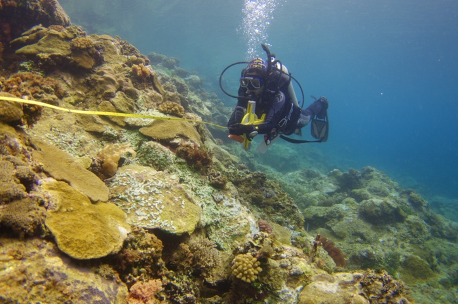
DOST-PCAARRD supported the nationwide coral reef assessment which assessed a total of 206 stations using HCC and allowed the development of national and regional benchmarks, assessment scales and baselines for management-oriented surveys in the future and standardized protocol for reef assessment. These protocols were adopted by the DENR through the three (3) Biodiversity Management Bureau (BMB) Technical Bulletins (Nos. 2019-03 on General Considerations for Coral Reef Ecosystems Restoration/Rehabilitation, 2017-05 on Guidelines on the Assessment of Coastal and Marine Ecosystems and 2019-04 Technical Guide on Biodiversity Assessment and Monitoring System for Coastal and Marine Ecosystems).
DA-BFAR has started to adopt the use of the protocol for reef assessment in all their regional offices through capacity building, wherein a total of 52 participants from 34 institutions in 12 Regions have been trained. Recognizing the need to conduct regular coral reef monitoring, DA also issued Memorandum dated 3 Oct 2019 on Visayas wide AFC Resolution No. 5, Series of 2019 “A Resolution Recommending the Bureau of Fisheries and Aquatic Resources (BFAR) to create an Assessment and Monitoring Team to Conduct Periodic Monitoring of Coral Reefs”. The Red List of Philippines on corals was also updated as required by Republic Act 10654.
Further, based on the results of the program, the PCAF Committee on Fisheries and Aquaculture and the National Fisheries and Aquatic National Resources Management Council (NFARMC) recommended to the Office of the President the amendment of Proclamation No. 2146 (Proclaiming Certain Areas and Types of Projects as Environmentally Critical and Within the Scope of the Environmental Impact Statement System Established under Presidential Decree No. 1586) to expand the scope of Environmental Impact Statement System and prioritize the maintenance and development of corals reefs in the country.
Reference:
NACRE Program and CBRACT Project, Dr. Wilfredo Roehl Y. Licuanan/DLSU

